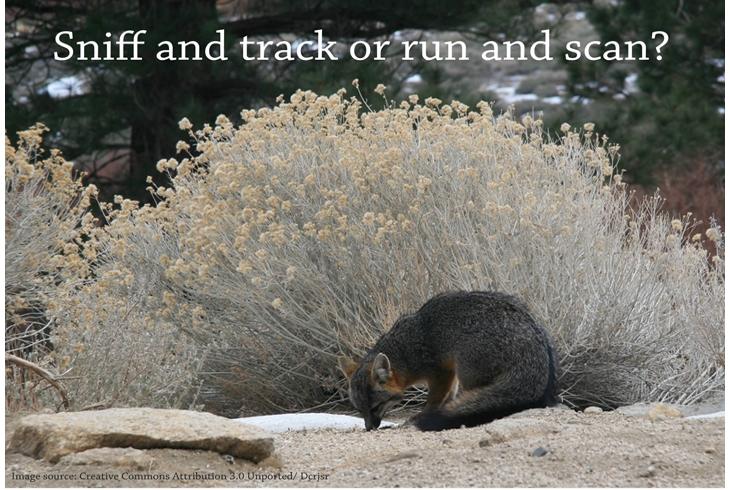It's dinnertime, and the smell of delicious food makes your tummy rumble. However, it's dark because of a powercut and you can't see very clearly. What do you do? Raise your head, sniff, and follow the delectable smells to where the food is? Or should you just take a guess and peek into the kitchen, or the dining room or the veranda, which are the likeliest places for dinner to be served? A recent study shows that the latter method - dubbed "run-and-scan" - may actually be a more efficient way to find your target than just following your nose.
Research by Urvashi Bhattacharyya and Upinder Bhalla from the National Centre for Biological Sciences (NCBS), Bangalore, reveals that while searching in a familiar area with limited choices, a run-and-scan strategy is more efficient than a tracking strategy. In a recently published paper in the journal eNeuro, Bhattacharyya and Bhalla used rats to study how organisms make choices on navigational strategies within complex environments when presented with an odour signal.
Olfaction, or smelling, is essential for many animals to track food, mates or predators. Dogs, rats, insects and even humans are known to adopt a zig-zag path while tracking odor trails - a strategy known as 'casting'. Casting is thought to be useful in large unfamiliar environments, and animals often use this behaviour during odor-based searches in natural situations. However, what happens when animals are within familiar environs? They now have access to more information such as well-known paths to food, or memories of past explorations. How do they optimize their search and compensate for disturbances under such conditions?
"So, the question we asked was - what could be the best strategies an animal might use in terms of either speed, accuracy or both, for target selection?", says Bhattacharyya, one of the authors of the work. To address this problem, Bhattacharyya trained rats within a specially designed chamber to recognise targets having specific odors. Correct identification of the scent-emitting target would result in the rat receiving a reward. This was followed by a series of target-recognition tests which included disturbances to the 'normal environment' of the arena such as addition of background odors and air turbulence (which disrupts the smell gradient). The rats' choices and behaviours were observed to analyse the strategies they used in identifying targets.
"We found that rather than casting, rats ran towards a potential target, then serially scanned across other targets till they found the right one", says Bhattacharyya. In human terms, this kind of search is equivalent to picking a likely room where dinner could be served, then peeking into different rooms to find dinner if the first one was wrong - a very different approach to actually using one's sense of smell to pin-point the room with food. Surprisingly, this strategy seems to assure very good accuracy in locating targets. Even in the presence of background odors or air trubulence that disrupted odor plumes, the animals were able to complete the tasks though they tended to be marginally slower than under normal conditions.
The rats located the correct targets in their first choice about 50% of the time, but resorted to serial scanning in the rest of the searches. Even when rats were given extra rewards for correct first choices, they continued to use serial scanning at least 30% of the time. Why did the rats persist in using serial scanning? The authors suggest that this has to do with speed - rats may simply prioritize speed over accuracy. If the first guess goes wrong, the rats use the serial scanning as a highly efficient fall-back strategy.
Mathematical modelling of casting and run-and-scan situations suggest that the two modes of searching can be useful in different situations. Although casting is advantageous in free-range searches, the run-and-scan approach seems more efficient in situations with known targets in familiar surroundings.
The take home message here? In familiar territory, the run-and-scan plan works!
The original paper titled "Robust and rapid air borne odor tracking without casting" can be found here.










0 Comments